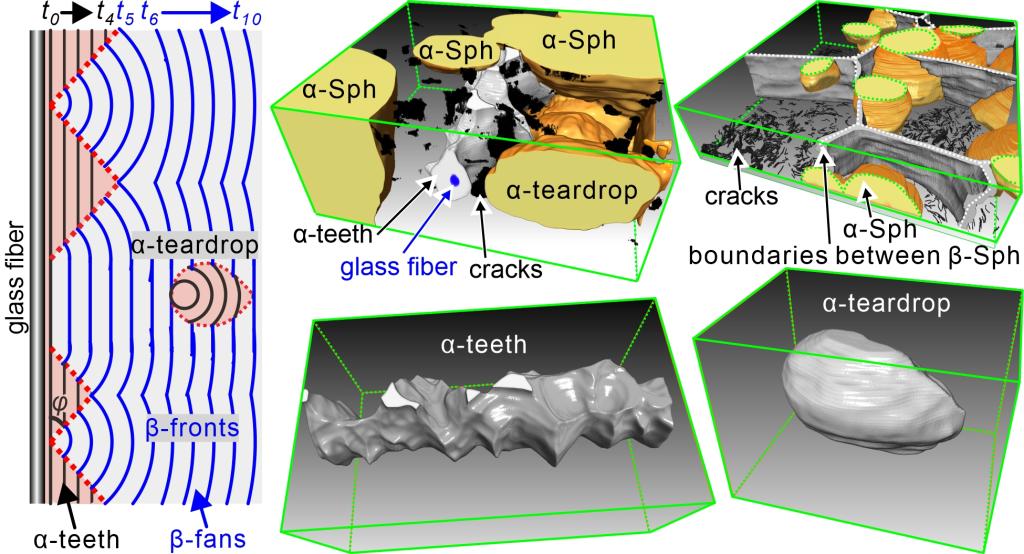Polymorphism of semicrystalline polymers has significant influence on their physical properties, with each form having its advantages and disadvantages. However, real-life polymer processing often results in different coexisting crystal polymorphs, and it remains a challenge to determine their shape, spatial distribution, and volume fraction. Here, i-polypropylene (i-PP) sheets containing both α- and β-forms were prepared either by adding β-nucleating agent or by fiber pulling-induced crystallization. By adding a compatible dye that is partially rejected from the growing crystalline aggregates (spherulites and cylindrites), we visualize the shape of these objects in 3D using two-photon fluorescence confocal microscopy. To distinguish between crystal forms, we take advantage of the difference in dye-retaining ability of the α- and β-aggregates. Even in 2D, fluorescence microscopy (FM) distinguishes the two crystal forms better than polarized microscopy. In 3D imaging, the volume fraction and spatial distribution of α- and β-forms in different morphological types could be determined quantitatively. Morphologies described as α-teeth, β-fans, and α-teardrops were visualized for the first time in 3D. Furthermore, internal and surface microcracks were seen to be associated predominantly with the β-form and around the fiber. Spatial distribution of α- and β-forms was also determined by scanning with a synchrotron X-ray beam. Good agreement was obtained with 3D microscopy, but XRD could not match the detail obtainable by the tomography. The work demonstrates the ability of the 3D imaging method to distinguish different crystal forms and their specific morphologies.

原文链接:https://pubs.acs.org/doi/epdf/10.1021/acs.macromol.3c00788